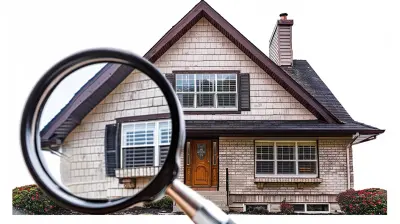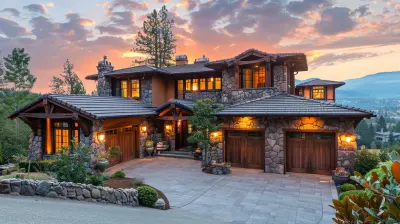Multi-Generational Homes: A Growing Trend in Today's Market
5 August 2025
The dream of homeownership has changed over the years. No longer is it just about a single-family home with a white picket fence. Instead, more people are looking for homes that can accommodate multiple generations under one roof.
Multi-generational living is becoming a game-changer in the real estate market, and it's easy to see why. Rising home prices, the high cost of senior care, and a shift in family dynamics are pushing more households toward this living arrangement.
But what exactly are multi-generational homes? Why are they becoming so popular? And is this trend here to stay? Let’s break it all down.

What Is a Multi-Generational Home?
A multi-generational home is a single residence designed to house multiple generations of a family—typically grandparents, parents, and children—living together.These homes often include features like:
- Separate entrances for privacy
- Additional kitchens or kitchenettes
- In-law suites or guest quarters
- Larger communal living spaces
In some cases, families modify existing homes to fit their needs, while others opt for newly built structures specifically designed for multi-generational living.

Why Are Multi-Generational Homes Gaining Popularity?
There isn’t a single reason why families are shifting to multi-generational living—there are several! Let’s break down the biggest factors driving this trend.1. Rising Housing Costs
Let’s face it: buying a home is expensive. Prices have skyrocketed in many areas, making it difficult for first-time buyers to enter the market.By pooling resources, families can afford larger homes that might otherwise be out of reach for a single household. Instead of multiple mortgage payments, taxes, and utility bills, everyone contributes, making homeownership more financially feasible.
2. Aging Parents and Senior Care Costs
Senior care costs are nothing short of staggering. Assisted living facilities and nursing homes can drain a family's savings in no time.For many, keeping aging parents at home is a more affordable and emotionally comforting solution. A multi-generational home allows elderly family members to remain close while still maintaining some independence.
3. Cultural and Traditional Influences
In many cultures, multi-generational living has been the norm for centuries. It’s common for grandparents, parents, and children to live together, fostering strong family bonds.Now, as cultural diversity increases, this mindset is influencing real estate trends. More families are embracing the companionship and support that multi-generational living provides.
4. Post-Pandemic Mindset
The COVID-19 pandemic reshaped how we view our living situations. Many people realized the importance of being close to family.With remote work options becoming more common, families have more flexibility to live together and support one another without the constraints of commuting to an office daily.

Benefits of Multi-Generational Living
So, what’s in it for you? A lot, actually! Let’s dive into some key benefits.Financial Advantages
- Shared Expenses: Splitting mortgage payments, property taxes, and utility bills makes homeownership much more affordable.- Lower Childcare Costs: With grandparents in the house, parents can save thousands on childcare.
- Less Debt: Young adults struggling with student loans can live at home longer while saving for their own place.
Stronger Family Bonds
Multi-generational homes create an environment where family members support and look out for each other. Whether it’s grandparents helping with the kids or adult children assisting aging parents, it fosters closeness.Greater Security and Convenience
- Built-In Support System: Someone is always around in case of emergencies.- More Hands on Deck: Household responsibilities can be divided among family members, making daily life more manageable.
Increased Home Value
As multi-generational living becomes more mainstream, homes designed for this setup are gaining value. Future buyers may see a house with an in-law suite or a second kitchen as a major selling point.
Challenges of Multi-Generational Living
Of course, sharing a roof with extended family members isn’t always sunshine and rainbows. There are definitely some challenges to consider.Lack of Privacy
Living with family means you're rarely alone. While some love the constant companionship, others may struggle with the lack of personal space.Potential for Conflict
Different generations often have different lifestyles and expectations. For instance, a retired grandparent may want peace and quiet, while younger family members might have a more active social life.Space Limitations
Not every home is designed for multi-generational living. Some families may need to renovate or expand to create separate spaces that provide enough privacy.Financial Disputes
Money matters can get tricky. It’s crucial to have open and honest discussions about expenses, ownership, and financial contributions before committing to a shared home.What to Look for in a Multi-Generational Home
If you’re considering making the switch, here are a few things to keep in mind when searching for the perfect multi-generational home:1. Separate Living Spaces
Look for homes that offer separate entrances, in-law suites, or finished basements that can serve as private quarters.2. Multiple Bathrooms and Kitchens
More people under one roof means longer lines for the bathroom. Having multiple bathrooms and, if possible, an extra kitchenette can make daily routines smoother.3. Open Floor Plan
Large communal areas like open kitchens and living rooms create shared spaces where family members can gather comfortably.4. Accessibility Features
If elderly family members are part of the household, look for single-level designs, wide doorways, and minimal stairs for easy mobility.5. Zoning and Legal Considerations
Some areas have zoning restrictions regarding multi-generational homes, especially if you’re planning to add extra living quarters. Always check local regulations before purchasing or renovating.
Is the Multi-Generational Trend Here to Stay?
All signs point to yes. As housing prices continue to rise and families prioritize togetherness, the demand for multi-generational homes isn’t likely to fade anytime soon.Builders are already catching on, with many new developments including multi-generational-friendly designs. Real estate agents are also recognizing the shift, making it easier for buyers to find suitable homes.
The bottom line? If you’re thinking about multi-generational living, you’re not alone. More families are embracing this lifestyle, and the trend shows no signs of slowing down.
Final Thoughts
Multi-generational homes aren’t just a passing trend—they’re a practical solution to modern housing challenges. Whether it’s for financial reasons, caregiving needs, or cultural traditions, more families are choosing to live together under one roof.While it does come with its share of challenges, the benefits—emotional, financial, and practical—far outweigh the downsides for many families.
So, if you're in the market for a new home, maybe it's time to consider a multi-generational setup. After all, home is where the family is.
all images in this post were generated using AI tools
Category:
Housing MarketAuthor:

Elsa McLaurin
Discussion
rate this article
1 comments
Nym Chavez
Embracing multi-generational homes fosters connection and support—an inspiring trend for families today!
August 31, 2025 at 4:21 AM

Elsa McLaurin
Thank you! I completely agree—multi-generational homes not only strengthen family bonds but also provide invaluable support and shared resources.


